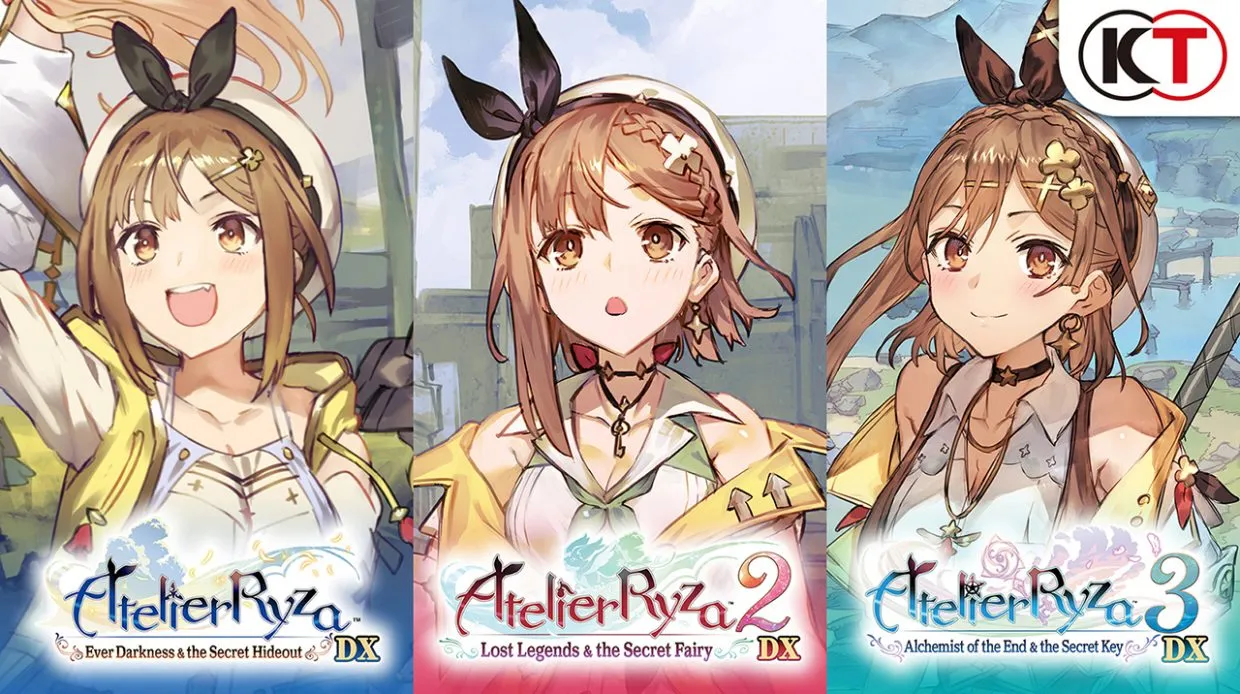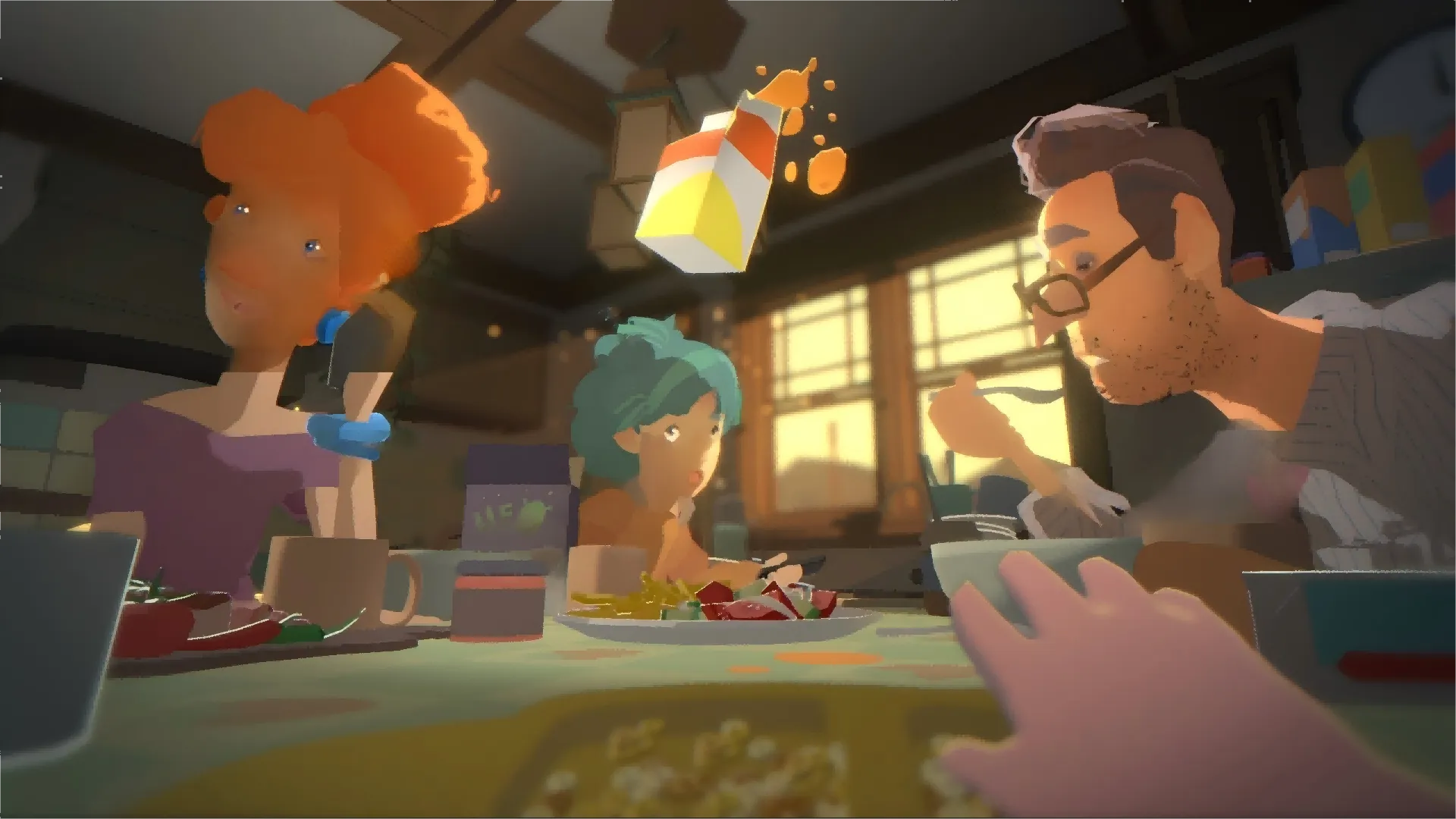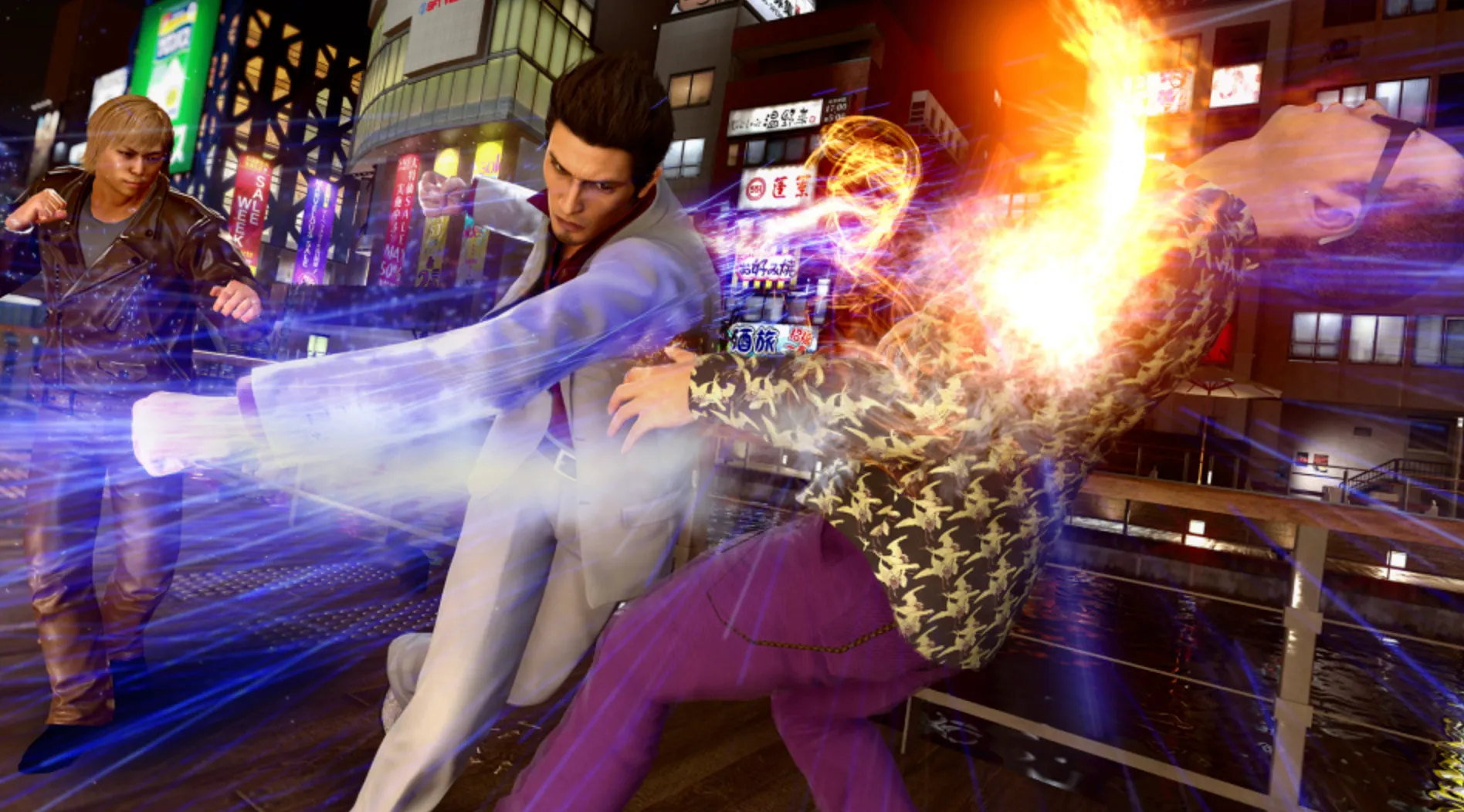contact Boss
Don’t rush to close it, talk to our boss directly, you will get a surprise.



1900+ Users
Completed User Services

November is here, and a slew of hot new games are coming to Switch and Switch 2! Nintendo’s first-party releases include Kirby’s Sky Rider, while third-party titles like Yakuza Kiwami 1+2 and Dragon Ball Z: Lightning Blast 0 are all coming together.
Zelda Musou: The Sealed Chronicles has been eagerly awaited by players since the Switch 2 launch. In this issue, we’ve selected a few of the most worthwhile new games to check out!
(Note: Games without “Switch 2” are playable on both Switch 1 and 2.)
“Zelda Warriors: Legend of the Sealed Sealed” is scheduled to be officially released on November 6, 2025, and will be available on the Switch 2 platform.

The game’s story is set in the ancient “Sealed War” mentioned in The Legend of Zelda: Kingdom of Tears. Players will experience the story from the perspective of Princess Zelda, fighting alongside historical figures like Raulu and Sonya to resist the war unleashed by Ganondorf.
The origins of the war are finally revealed. This game depicts the ancient Sealed War in the world of The Legend of Zelda: Kingdom of Tears. The hidden story of the game’s close connection to the Kingdom of Tears is finally revealed.
As the official prequel to The Legend of Zelda: Kingdom of Tears, “Warriors of Zelda: Sealed Chronicles” continues the core excitement of the Warriors series, deeply integrating Zonau technology, strategic collaboration, and open exploration elements. The gameplay is distinctive and extremely innovative.
This game, for the first time, incorporates the main canonical storyline of The Legend of Zelda, centered around the ancient “Sealed War,” filling in historical gaps left unexplained in Kingdom of Tears.
The narrative employs a dual storyline structure: a main storyline and side quests. The main storyline focuses on the core battle against Ganondorf, while side quests are unlocked through NPC commissions and ally-trusted quests.
These not only enrich the world but also reveal key items, skills, or hidden plot points, directly impacting character growth and exploration.
Some side quests also lead players to discover new areas or trigger seasonal events, deeply integrating exploration with the storyline and enhancing the story’s integrity and replay value.
As a core gameplay innovation, the game fully integrates the Zonau device from Kingdom Tears into the combat system, making it the core of its tactics.
Players can flexibly equip and switch between various devices through a dedicated menu. For example, wield the “Fire Dragon Head” to sweep across the enemy, deploy a flamethrower to create a continuous burning zone, or combine a fan and a stun gun to create a lightning storm and other large-scale attacks.
All devices consume battery power, which can be replenished with combat items, allowing for instant switching and strategic coordination in combat.
In addition, elemental interactions add further dynamics to the battlefield—environmental interactions like lightning strikes conducting electricity, flames detonating oil barrels, and water currents assisting movement require players to dynamically adjust their tactics, rather than relying solely on combo clearing.
This game breaks with series convention by featuring Princess Zelda as a sword-wielding main character for the first time. Equipped with the Zonau Sword of Light and a bow, she unleashes abilities like Light Bow Rain and Piercing Light, balancing melee and ranged attacks.
Other playable characters offer distinct styles: Raulu excels at spear thrusts and beam attacks, while Mineru can control Zonau mechas (such as giant tires, golems, and vehicles) and even summon constructs to assist in combat.
Switch characters at will during battle to adapt to different situations—use Zelda to deal with flying enemies, Raulu to charge through enemy lines, and Mineru’s mechas are great for clearing large areas or deciphering traps.
The new “Sync Attack” system is the core of cooperative combat: when two characters team up, they can trigger unique combined attacks, with varying effects depending on the combination.
For example, Zelda and Rauru can team up to fire a controllable purifying beam cannon, while Zelda and Mineru can team up to ride a giant golem, crushing the battlefield with devastating power while quickly draining the weakness gauges of elite enemies.
This mechanic forces players to balance the need to “clear the field individually” with “combined power,” adding strategic depth to combat.
Leveraging the Nintendo Switch 2’s powerful hardware, the game delivers a thrilling “thousand-player-on-the-screen” mowing experience—even against legions of tens of thousands of Pokémons, the graphics maintain a stable, high frame rate with no stuttering or frame drops.
The battlefield has also doubled in size, spanning three major areas: surface, underground, and sky islands. The underground world is roughly the same size as the surface, while the sky islands offer the thrill of vertical combat, and the level design diversity far exceeds that of previous games.
At the same time, the game retains the core gameplay logic of the Dynasty Warriors series, such as targeting enemy weaknesses and precise counterattacks. Combined with simplified skill release (R key toggles dedicated skills, A/B buttons for control), the game allows new players to quickly learn the game, while veterans can use combos to push their skill limits.
The game continues the free exploration legacy of the Legend of Zelda series, with the continent of Hyrule filled with secrets, hidden dungeons, and puzzle-solving locations.
Some locations can only be unlocked through the use of specific items, rune abilities, or story triggers. Core exploration mechanics include:
This game supports local split-screen and online play, and also includes a “Game Share” feature—only one player needs to own the game to invite a friend to join online on any Switch console, lowering the barrier to entry for multiplayer play.
Multiplayer levels are designed specifically for collaboration. Some mechanisms and boss battles require team members to synchronize their actions and trigger coordinated skills to complete them, eliminating the awkward situation of “fighting alone.”
The game also ensures progress continuity across multiple players. Regardless of the number of players, players’ individual progress and rewards are retained, further encouraging players to experience a richer range of combat combinations through cooperative play.
Join forces with Princess Zelda, Raulu, and other heroes of Hyrule Kingdom to take on the powerful forces of the Demon King with unparalleled action!
“Goodnight Universe” is a narrative adventure game developed by Nice Dream Games and is scheduled to be released on November 12, 2025. Players will control “Isaac”, a baby who is only six months old but has superpowers, and embark on an adventure in a world full of family love and corporate conspiracy.

As the spiritual sequel to Before Your Eyes, Goodnight Universe continues the developer Nice Dream Games’ deep cultivation of innovative interactions and emotional storytelling.
With “a six-month-old superpowered baby” as the core setting, it combines science fiction conspiracy and family warmth to create a narrative adventure experience that is both subversive and infectious.
The game’s most striking innovation is the upgrade of the previous game’s eye-tracking technology to a deep facial tracking system.
This allows players to control the superpowers of the infant protagonist, Isaac, with real facial expressions, breaking the boundaries of traditional controller/keyboard control.
For example, raising an eyebrow can trigger objects to levitate, a grin can enhance telekinesis, a frown can concentrate energy bursts, and even blinking can adjust the rhythm of superpower release.
This transforms “playing games with your face” from a narrative metaphor into a fully immersive control experience.
At the same time, the game retains traditional control modes, allowing players to freely choose based on their device (whether or not they have a camera), balancing innovation with ease of use.
This interactive design cleverly echoes the premise that infants cannot speak and can only communicate their needs through expressions, ensuring a seamless integration of control logic and character identity.
The game is centered around the story of a six-month-old superpowered baby versus an evil tech company, creating a strong dramatic contrast and a unique perspective experience:
The game uses a first-person perspective to restore the cognitive world of an infant, with a low field of view, a focus on close objects, and occasional blur or shaking.
Everyday household scenes (such as the bottom of the sofa or under the dining table) become “secret realms” full of exploration, while ordinary objects in the eyes of adults (such as a baby bottle or a toy car) may become the key to solving a puzzle.
Isaac’s superpowers gradually progress from “light object levitation” (e.g., moving toys, opening drawers) to “precise telekinesis” (e.g., assembling machinery, breaking door locks), and even “large-scale energy blasts” (e.g., fighting corporate security).
These abilities are deeply integrated with the storyline, allowing players to intuitively experience the growth of the “baby savior.”
This work abandons a single narrative line and uses the dual core of “family restoration” and “conspiracy cracking” to drive the plot, taking into account both comedic tension and emotional depth.
Isaac’s superpowers stem from a mysterious and unknown source, unexpectedly attracting the attention of an ambitious tech company.
Players must gradually uncover the secrets of their own abilities while concealing them and protecting their family. The core emotional focus is “repairing the rifts between family members.”
By completing side quests (such as helping parents solve work problems and comforting depressed family members), you deepen family bonds.
The overall tone blends absurd comedy with heartwarming healing. The adventure, told from a child’s perspective, is filled with hilarious moments (such as accidentally deciphering a trap by spilling milk with telekinesis), while the pursuit by the tech company and the crisis facing the family create a sense of tension.
Ultimately, the film achieves emotional heights through the core story of a vulnerable life protecting its loved ones. This narrative design has already earned it awards at the Tribeca Film Festival and industry recognition.
The story’s trajectory is influenced by key player choices. Different interactions (such as prioritizing protecting family or proactively exploring the truth) unlock different endings. Some focus on family reunions, while others delve deeper into the secrets of the origins of superpowers, enhancing the game’s replayability.
The game features a cast of fully voiced characters with warmth and personality, making the interactive experience even more immersive.
Players will deeply interact with family members with distinct personalities (such as the gentle yet anxious mother and the silent but reliable father) and neighbors who become unexpected allies.
Dialogue choices not only influence plot development but also unlock character-specific stories (such as the family’s secret protection of Isaac’s superpowers), allowing each character to transcend their role as a mere tool.
The voice acting is well-suited to the characters’ identities, with the baby’s babbling, the family’s daily conversations, and the villain’s cold threats forming a sharp contrast.
Combined with the delicate character movements and expressions (such as the worried frowns of parents and the nervousness of allies when passing on information), a real and tangible network of character relationships is constructed.
As a multi-platform release (including PC, PlayStation 5, Xbox Series X/S, Nintendo Switch, and Switch 2), this game has been optimized for compatibility:
The official global release date of “Atelier Ryza: Secret Trilogy DX” has been confirmed as November 13, 2025.
As a milestone work in GUST Studio’s “Atelier” series, it has become a phenomenal RPG with cumulative global shipments exceeding 2.5 million copies.
The core of the game revolves around “the summer growth of an ordinary girl”, perfectly integrating a deep alchemy system, free exploration, and heartwarming narrative, and the comprehensive upgrade of the DX version has made up for the shortcomings of the experience.

The trilogy takes “the growth of natural and straightforward boys and girls” as its core concept, constructing a complete narrative line spanning several years, breaking the tradition of independent plots in the series。
From the naive young girl yearning for adventure in the original “Ever Darkness and the Secret Hideout,” to her mature transformation after reuniting with her companions three years later in the second “Lost Legends and the Secret Fairies,”。
and finally to the “Last Summer Adventure” in the third “Alchemist of the End and the Secret Key,” Ryza and her companions’ story gradually deepens around the “secrets of their hometown,” “Lost Legends,” and “the roots of alchemy.”
While there’s no grand thesis about saving the world, the story delicately depicts adolescent friendship, bonds, and self-discovery through daily interactions, separations and reunions, and shared puzzle-solving, creating a powerful sense of immersion.
All three series have added new side quests and future stories, such as the first generation’s “Ryza’s One Day Later Story” (Ryza’s adventure teaching children on the island), the second generation’s “Ampel & Lila” alien world exploration story, and the third generation’s “Clifford & Celie” isolated island reunion story.
These stories not only fill in the gaps in the original timeline, but also add exclusive stories for controllable characters, making the character portraits more three-dimensional.
Alchemy, as the core gameplay of the series, has undergone step-by-step evolution in the trilogy, striking a balance between novice-friendliness and in-depth exploration.
The classic cycle of “gathering materials → mixing in an alchemical cauldron → creating items” is maintained.
Materials come from a variety of sources, including field foraging, monster drops, and quest rewards. Item types include recovery potions, attack items, and equipment enhancement materials.
All items are deeply integrated with exploration and combat, creating a closed-loop experience of “gathering – alchemy – adventure.”
Unlocks the upper limit of the collection basket and material box, adds graphical options and recipe management features, and makes it easier to stockpile and combine materials for high-level alchemy.
The exploration scenes of the trilogy are gradually upgraded, from linear areas to open worlds, with rich action elements to enhance immersion:
The enigmatic critter “Fei” from the second game will accompany you throughout your journey to assist.
The third game adds the “Wind Beast” as an assistant, with an automatic gathering function that allows you to fly across the wilderness to collect alchemical materials, greatly improving exploration efficiency.
Some scenes require specific alchemical items or “secret keys” to unlock, such as attribute keys that open blocked areas, allowing exploration and alchemy to become intertwined.
The combat system continues to be optimized while retaining the series’ characteristics, balancing action and strategy:
Adopting a real-time turn-based system integrated with action elements, players can accumulate AP (Action Points) to unleash basic skills and ultimates.
Combined with powerful items crafted by Ryza (such as Exploding Flasks and Attribute-Boosting Potions), they can turn the tide of battle.
The combat rhythm has gradually evolved from the steady pace of the first game to the fluid and exhilarating pace of the third game.
The playable characters continue to grow throughout the trilogy, reaching a series-high 11. Each character possesses a unique combat style (e.g., melee damage, ranged support, magic attacks), allowing players to create diverse tactical combinations by combining their four-player squads based on enemy characteristics.
The DX version adds several controllable characters, including Agatha, Gilo, and Lila, further enriching the roster options.
All three games have added a “Free Battle” mode, which allows players to freely challenge monsters, obtain rare materials, or increase their levels, meeting the gaming needs of different players.
As the definitive edition, the Trilogy DX version integrates all the additional content of the original version and adds a large number of exclusive elements.
Character and Story Expansion: Each game features exclusive side stories and playable characters, and some stories unlock new maps, enriching the adventure.
Appearance and Interactive Features: Includes a full collection of swimsuits, weapon skins, Far Eastern Traveler costumes, and other cosmetic items. Supports photo mode with flexible adjustment of angles and expressions to capture the most exciting moments of your adventure.
Function Optimizations and Bonuses: Optimizes the control feel, improves the control of spirit beasts, and unlocks the upper limit of item items. Includes all additional background music, recipes, and maps from the original game. Supports cross-platform save data integration, and veteran players can receive exclusive bonuses.
The game is highly recognizable in its audio-visual presentation and character design, creating a unique “summer youth” atmosphere:
The game features a bright, soft cel-shaded style, creating rich, lifelike environments. From the sandy beaches of Keuken Island to the seamless wilderness of the third game, the colors are vibrant and full of life.
The character models are detailed, and Ryza’s iconic “puffy legs” create a vibrant and endearing image.
The relaxing background music, with its thrilling melodies during battle and soothing tunes during exploration, perfectly complements the game’s settings.
All characters are voiced in Japanese, and the voice acting is perfectly tailored to their personalities, making their interactions more engaging.
You can change your character’s costumes and freely create in photo mode. Some scenes also include fun interactions (such as daily conversations with companions and mini-animations about gathering in the wild), further enhancing the immersive experience.
Consistency between DX versions of individual games and the collection: Whether purchased as a separate DX version of a single game (such as Ryza 1 DX) or as the trilogy collection, the release date remains the same: November 13, 2025. There will be no separate releases.
End-of-Sale Transition: To coincide with the release of the DX versions of the trilogy, previous versions of the three original games will be discontinued on all platforms on November 12, 2025 (one day before the release date). Players will only be able to experience the series through the DX versions.
Pre-orders and Bonuses: The game is currently available for pre-order on Steam, the PlayStation Store, and the Switch eShop. Pre-orders will receive exclusive bonuses (specific details vary by platform).
As a remake of SEGA’s classic gangster game “Yakuza 2“, the Nintendo Switch 2 version of “Yakuza Kiwami 2” is officially released on November 13, 2025. With its optimization adjustments for the new console, complete core content retention, and flexible purchasing options, it has become a benchmark for gangster action games on the NS2 platform.

As a remake of “Yakuza 2“, the game has been launched on multiple platforms one after another. The core release nodes are as follows:
Version Positioning: A remastered, cross-platform port based on the “Yakuza Engine,” optimized for the Nintendo Switch™ 2’s hardware, offering both portable and console-like experiences, while fully recreating the high-quality content and additional features of the PS4 original.
Distribution: Simultaneous physical and digital releases, along with a Nintendo eShop-exclusive “Yakuza Kiwami + Kiwami 2” bundle, perfect for both new players and veteran collectors.
Pre-order Information: Pre-orders for the digital version will open on September 24, 2025, on the Nintendo eShop. Pre-orders will unlock exclusive bonus items (depending on the region).
This version retains the core story of the original and includes additional chapters. Set in the bustling cities of Kamurocho, Tokyo, and Sotenbori, Osaka, the story follows the fateful battle between Kazuma Kiryu, the “Dragon of Dojima,” and Ryuji Goda, the “Dragon of Kansai.”
One year after the “Missing 10 Billion” incident, the fifth-generation Tojo Clan leader, Yukio Terada, is murdered. Kiryu Kazuma, who had returned to a peaceful life, returns to the underworld to save the weakened Tojo Clan.
Crossing the borders of Kanto and Kansai, he becomes embroiled in a revenge struggle over gang supremacy and hidden truths.
He faces the ultimate showdown with Ryuji Goda, and encounters key characters such as Kaoru Sayama, the “Yakuza Hunter.”
This exclusive storyline completes the series’ unfinished storyline, focusing on the 2006 “Tojo Clan Reform” period. Majima Goro, known as “Shimano Mad Dog,” clashes with the rising power of Uematsu Akino for the position of Wakagura.
He unexpectedly becomes embroiled in a vast conspiracy and reunites with the man who changed his fate. This story delves into the complex past beneath Majima Goro’s bohemian exterior.
Keep returning classic characters like Kazuma Kiryu, Ryuji Goda, Haruka Sawamura, and Daigo Dojima, voiced by the original voice actors, including Takaya Kuroda, Haku, and Yuichi Kimura. New characters exclusive to this chapter include Ryota Kawamura (voiced by Naoto Takeda) and Makoto Makimura (voiced by Miyuki Sawashiro).
Core Fighting Mechanics: Retaining Kiryu Kazuma’s multiple fighting styles, coupled with an “Action Matching System” for more intuitive control and a hard-hitting combat experience that both new and experienced players can quickly learn.
Featured combat elements:
Includes the “Wine Island” nightclub simulation (training hostesses and participating in national nightclub competitions) and the “New Gang Creator” defensive real-time strategy game (control nine characters to defend against enemies, with legendary wrestlers appearing as bosses).
The latter directly includes the original “Gang Creator Pack” DLC for PS4/Steam.
For the first time in the series, the “Waterfall Viewing Paradise” restroom mode, the “Photo Studio” idol photo mode, and dozens of other classic casual gameplay options, including golf, darts, karaoke, claw machines, Japanese mahjong, and a Western-style casino, fully recreate the fun of everyday life outside the world of the underworld.
Specially tuned for the Nintendo Switch 2’s hardware performance, striking a balance between portability and visual performance:
The core strengths of Yakuza Kiwami 2 for Nintendo Switch™ 2 lie in its “complete content + platform compatibility + flexible choice”: it retains the original’s hardcore combat, deep storyline, and extensive casual gameplay, while also optimizing the dual-mode experience for the new console through dynamic resolution and stable frame rate.
The bundle and upgrade options cater to both new and returning players, and the inclusion of simplified Chinese further lowers the barrier to entry.
For fans of yakuza themes, exhilarating combat, and an immersive open world, this version is an excellent introduction to the series and a convenient way to revisit classics.
To be continued